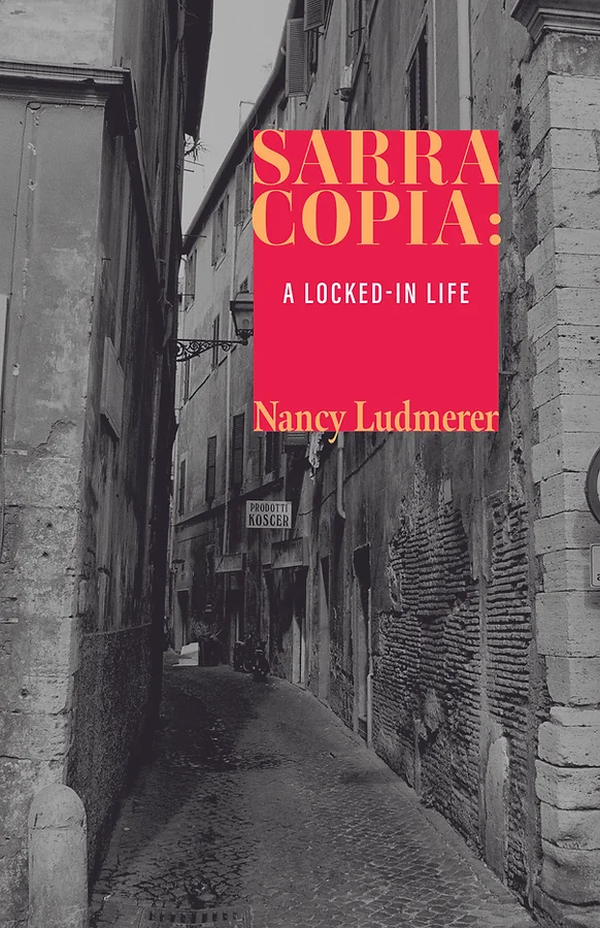Nancy Ludmerer
SARRA COPIA:
A LOCKED-IN LIFE
Santa Rosa, CA: WTAW Press, 2023, ISBN: 978-1-733669-9-7
Reviewed by Ruth Ohayon1
The novella, a piece of historical fiction by Nancy Ludmerer, is a reconstructed and reimagined life of Sarra Copia Sullam (1592-1641), an Italian Jewish poet and writer growing up in the Venice Jewish ghetto during the seventeenth century. She was the daughter of prominent and affluent Venetian Jews. Little is known of the details of her life, but she invited prominent leading intellectuals to her literary salons.
The first-person narration consists of thirty-two segments, two to three pages each, diary-style entries with various titles including, “Sisters,” “Sukkot,” “The Salon,” “A Reversal.” The opening paragraph of the first entry, “Doors” is striking. Sarra writes:
“March 29, 1516. The date they locked us in. Over seventy-five years before I was born. Every night from sunset to sunrise, the Jews must be confined. Two heavy wood doors, dark and streaked with moisture, reinforced with iron bolts, keep us in; one door on the Ghetto side of the bridge, the other opening onto the rest of Venice…Today is my eighth birthday, February 13, 1600” (1).
In the coming of age story, we learn of other families and refugees fleeing the Inquisition. The Jews in Venice were required to wear yellow hats and yellow hoods. The word “ghetto” originated in Venice from the copper foundry that was known as the ghèto. The gates to the Ghetto, a small, polluted island on the outskirts of the city, were closed at night, and the inhabitants were imprisoned by the canals.
As a young girl, Sarra dreamed of establishing a salon where men and women of all faiths including Christian clerics could share their poetry, music, and philosophy. Her father encouraged her to follow her hopes and taught her that she was “equal in intellect to any man” (33). He cultivated in her the life of the mind, the artistic and inquisitive mind. Her home was the epicenter of high culture. She read her own poetry and entertained intellectuals of the period. Sarra describes the salon:
“We read and discuss works-in-progress, philosophy, religion. Sometimes we play music or sing. I decide the order of events - a delicate matter - and when appropriate, express my opinions…Often, I am the only Jew; invariably the only woman. On religious matters, I am outnumbered and outmanned. Nonetheless, I hold my ground” (40-41).
One of the salon attendees belittled her work and writing as he urged her to read her poem: “Now, beautiful enemy of Jesus, will you grace us with your little scratches?” (41).
In “Attacked, ” Sarra recounts that on a morning stroll, a man assaults her with a sharp-edged, hard leather case containing a document written by a salon regular criticizing her “not only for being a woman and a Jew, but for being a bad Jew” (46). He accuses her of rejecting the original sin, denying the immortality of the soul, and commends her to death or conversion. She decides to defend her position and writes a Manifesto, a powerful rebuke of the heresy she is accused of. Even though she fears the attention of the Inquisitor, the honor of her family’s name must be preserved and the endangered Jewish community of Venice must be protected. This document draws on Jewish and secular writings to formulate arguments for belief in the immortality of the soul. She vigorously defends her religious views.
In “Miracle Child,” Sarra writes about the short-lived child she has with her new husband and ponders on leaving the Ghetto and the gates that confine them, but it would require conversion and she responds with one word, “Unthinkable” (26).
The story she writes about her sister Diana in “A Reversal” is very powerful. Her jealous husband brutalizes her one day, believing she was gazing at another man. Sarra welcomes the badly injured Diana to her home and raises her child. The last entry, “Birth and Rebirth,” ends on a hopeful note. She concludes her writing in an affirming way: “The life of the mind. No one can take that away” (67).
Nancy Ludmerer’s moving text vividly recreates the life of Sarra Copia Sullam, as she experienced childhood, marriage, motherhood. A poetess’s life is marked by tragedy, a father’s death, the loss of a child, a sister’s painful journey. Sarra however, remained intellectually fierce, a bright thinker and conversationalist, amidst hostility towards Jews and women. It is noteworthy that Sarra became fascinated with a play published in 1618 titled L’Ester about Queen Esther. Similar to the biblical heroine, Sarra remained true to herself and defended her people with a powerful voice and words.
1 Ruth Ohayon, PhD, is Professor Emerita at Westfield State University in Massachusetts. She focuses on postcolonial literature, Francophone women writers, Caribbean, and diasporic studies. She recently taught a course on the Literature of the Holocaust.

